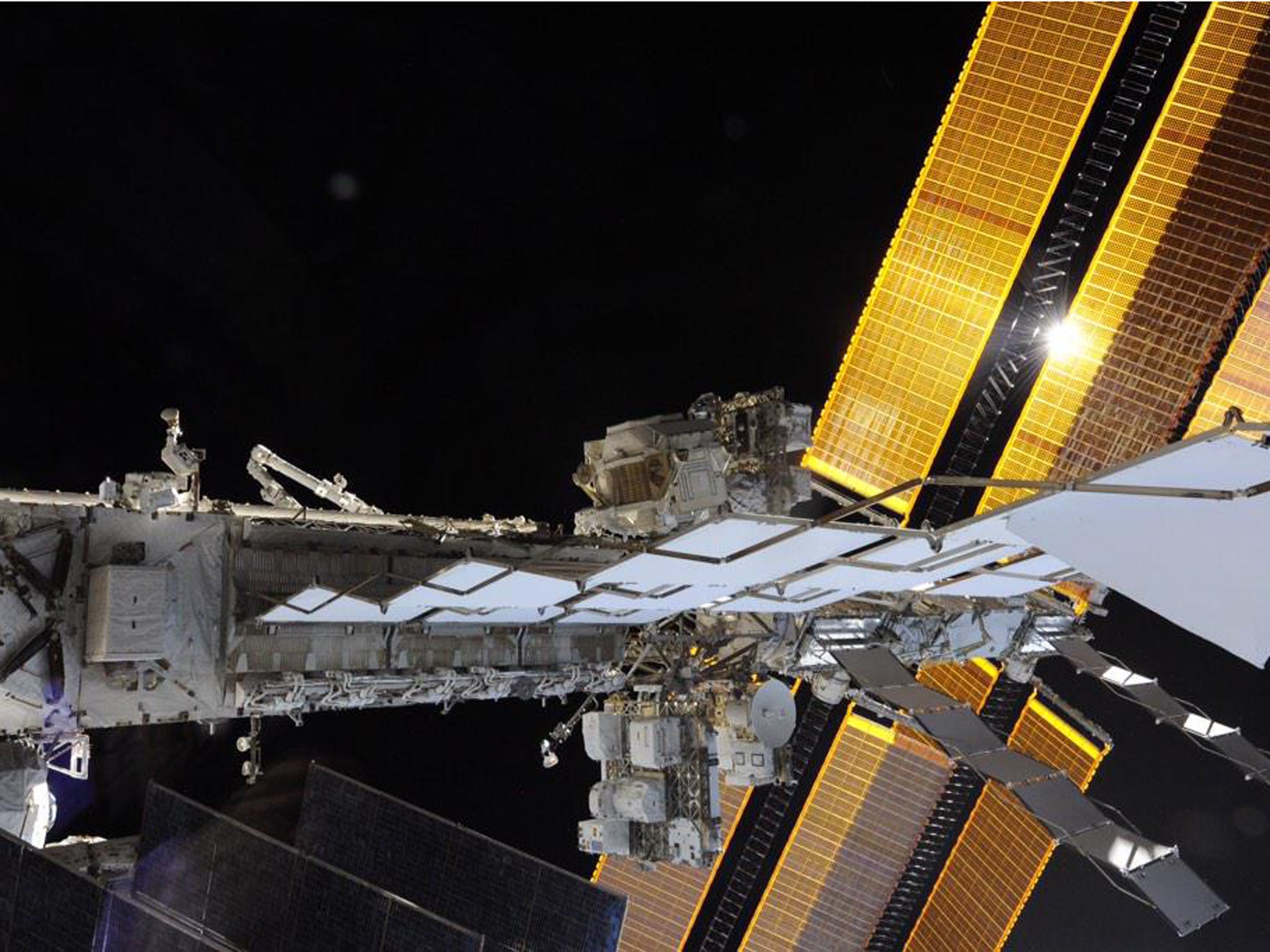International Space Station’s huge size shown in spacewalk image
The huge satellite project weighs more than 7000 Kylie Jenners

Your support helps us to tell the story
From reproductive rights to climate change to Big Tech, The Independent is on the ground when the story is developing. Whether it's investigating the financials of Elon Musk's pro-Trump PAC or producing our latest documentary, 'The A Word', which shines a light on the American women fighting for reproductive rights, we know how important it is to parse out the facts from the messaging.
At such a critical moment in US history, we need reporters on the ground. Your donation allows us to keep sending journalists to speak to both sides of the story.
The Independent is trusted by Americans across the entire political spectrum. And unlike many other quality news outlets, we choose not to lock Americans out of our reporting and analysis with paywalls. We believe quality journalism should be available to everyone, paid for by those who can afford it.
Your support makes all the difference.It takes a lot to keep six astronauts alive, hurtling around in space for months at a time. But the exact scale might not ever have been truly revealed as it has by this picture — on which an astronaut is dwarfed by the International Space Station in which he temporarily lives.
The image, tweeted by fellow ISS-dweller Terry Virts, shows Butch Wilmore floating in space as he took part on the third spacewalk of the week. The visits saw astronauts lay 800-feet of cable, four antennas, three laser reflectors and a robotic arm.
In total, Sunday’s mission lasted five and a half hours. It was the 187th time that astronauts have stepped out of the ship on the regular trips, which are required to keep the huge feat of engineering ticking over.

The true scale of that space station is huge. To keep the team of usually six people comfortable and healthy, the station has about the living space of a six-bedroom house. It has two bathrooms, a gym, and a 360-degree bay window and is powered by 2.3 million lines of computer code, according to Nasa.
To get to that size, the station has been slowly assembled since the project began in November 1998. Rockets bring up new modules and attack them on, adding new capabilities and size to the huge satellite.
The mission is set to shut in 2024. But it’s unclear what will happen to the parts after that – Russia has said that it will take the parts and use them to assemble a new space station, which it hopes to use for its first trips to the moon.
Join our commenting forum
Join thought-provoking conversations, follow other Independent readers and see their replies
Comments